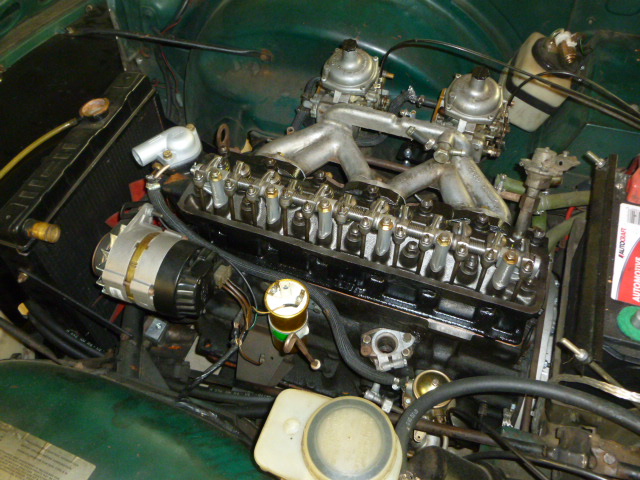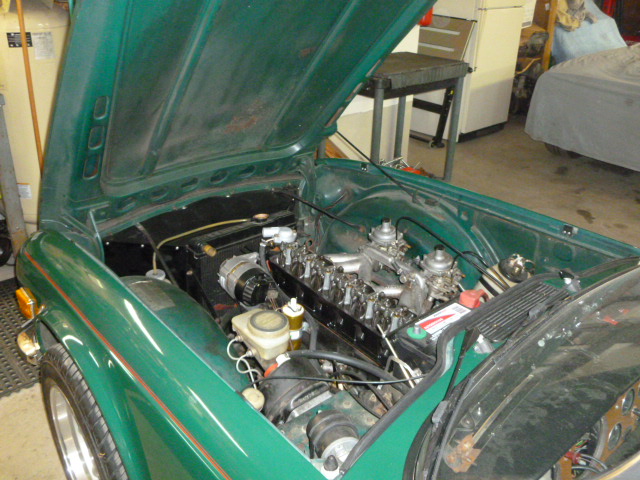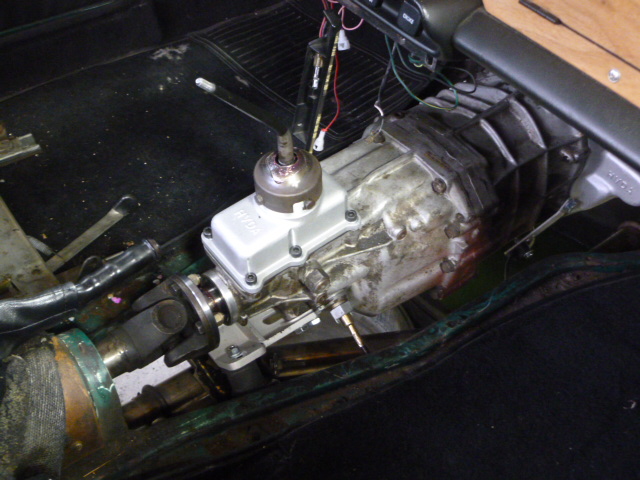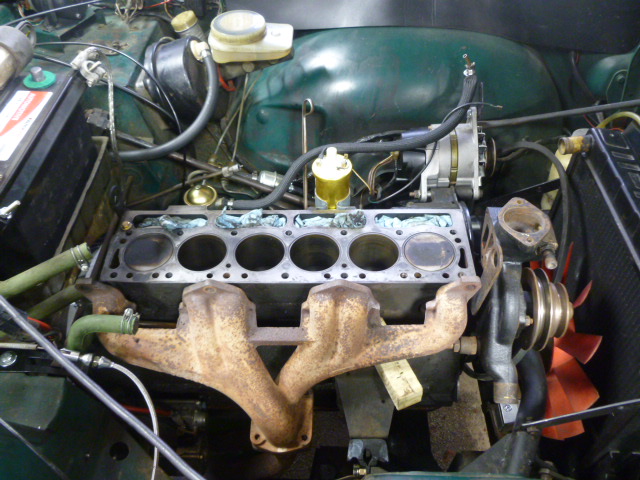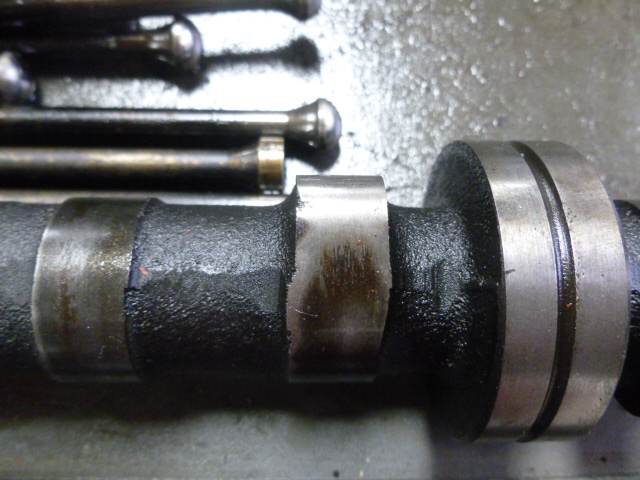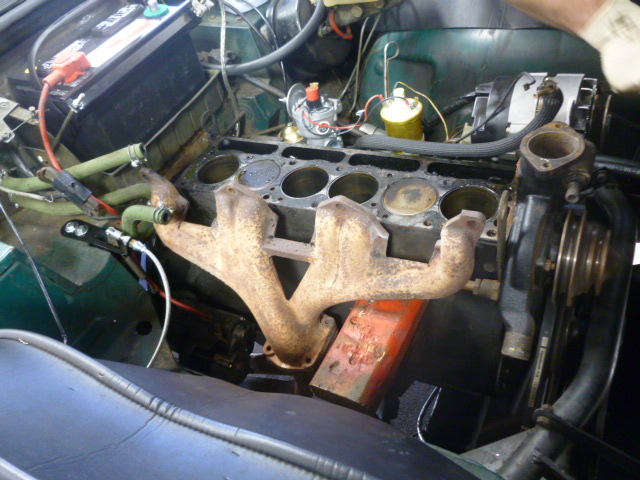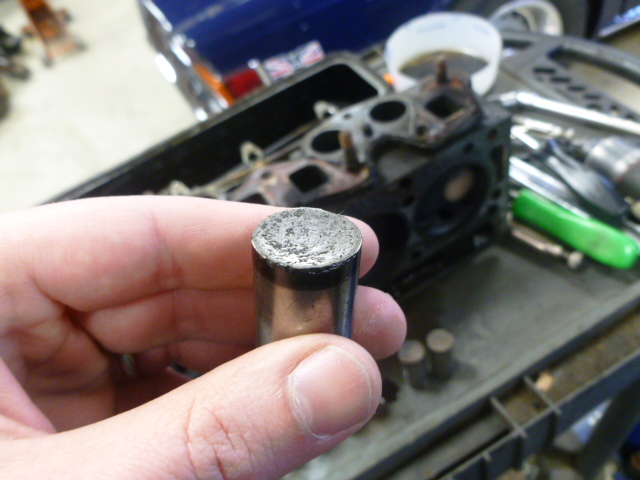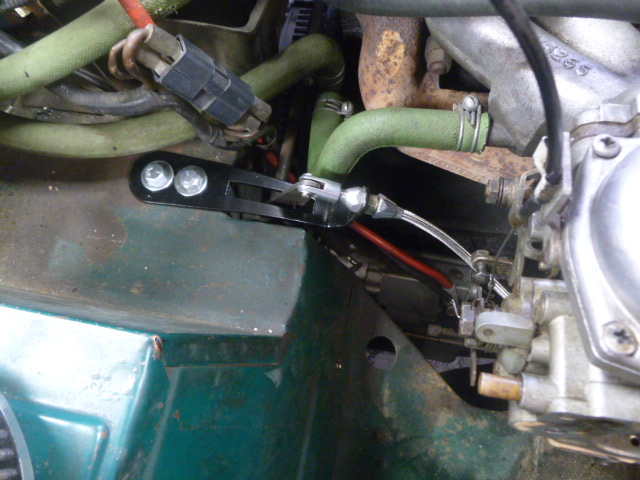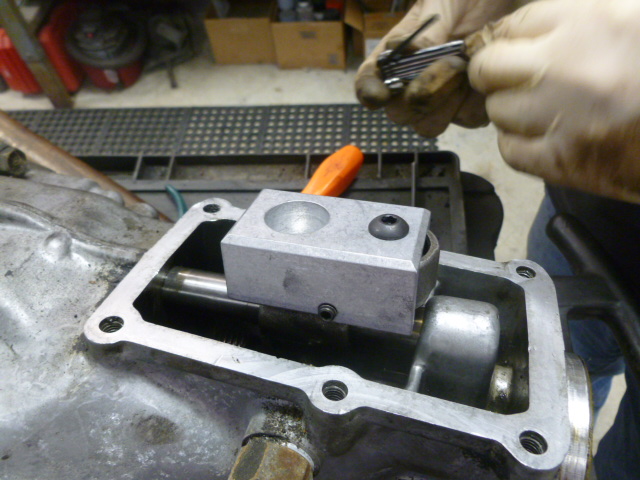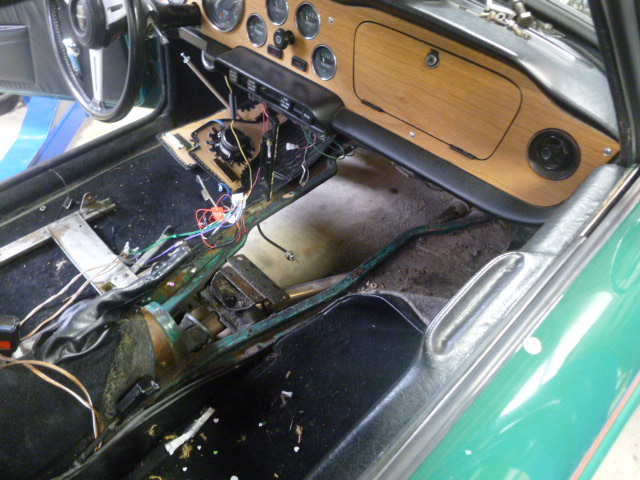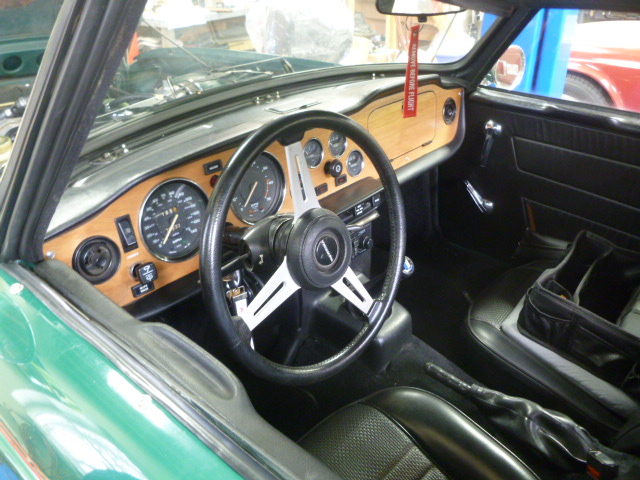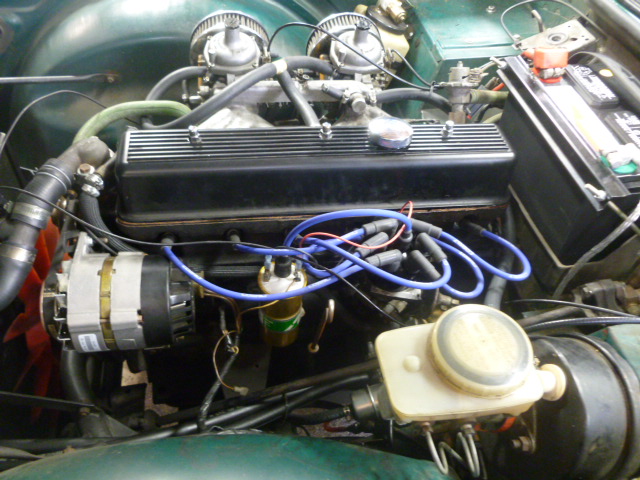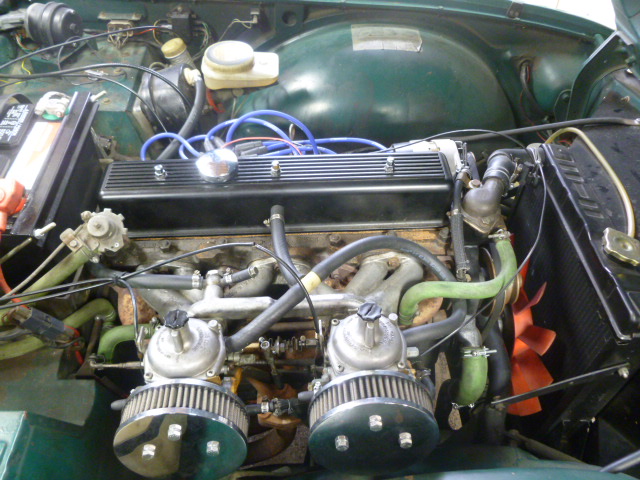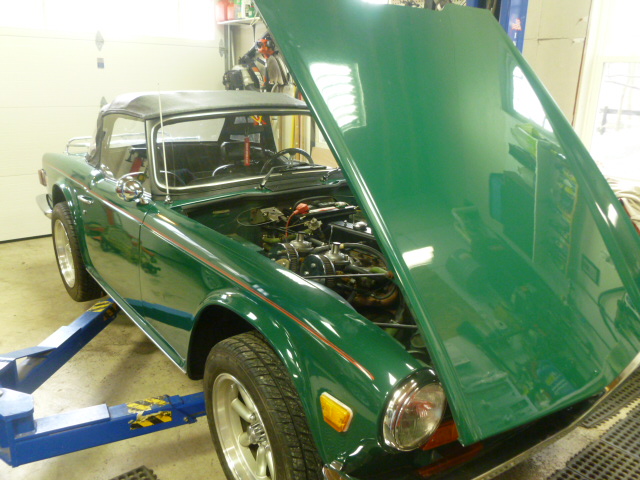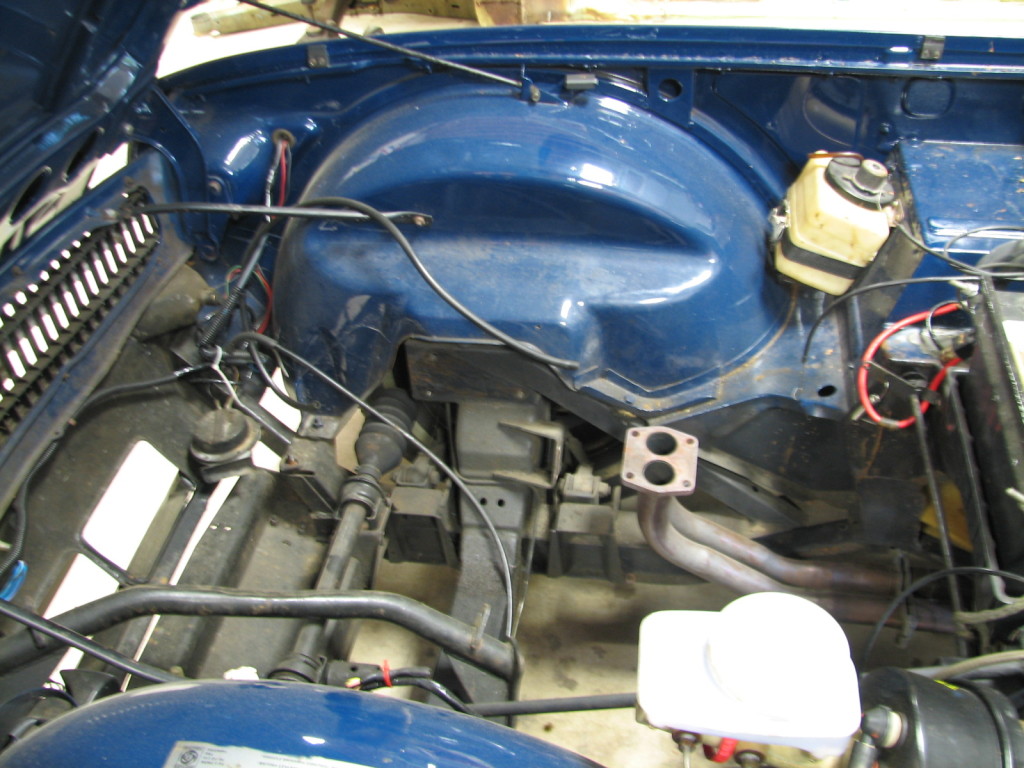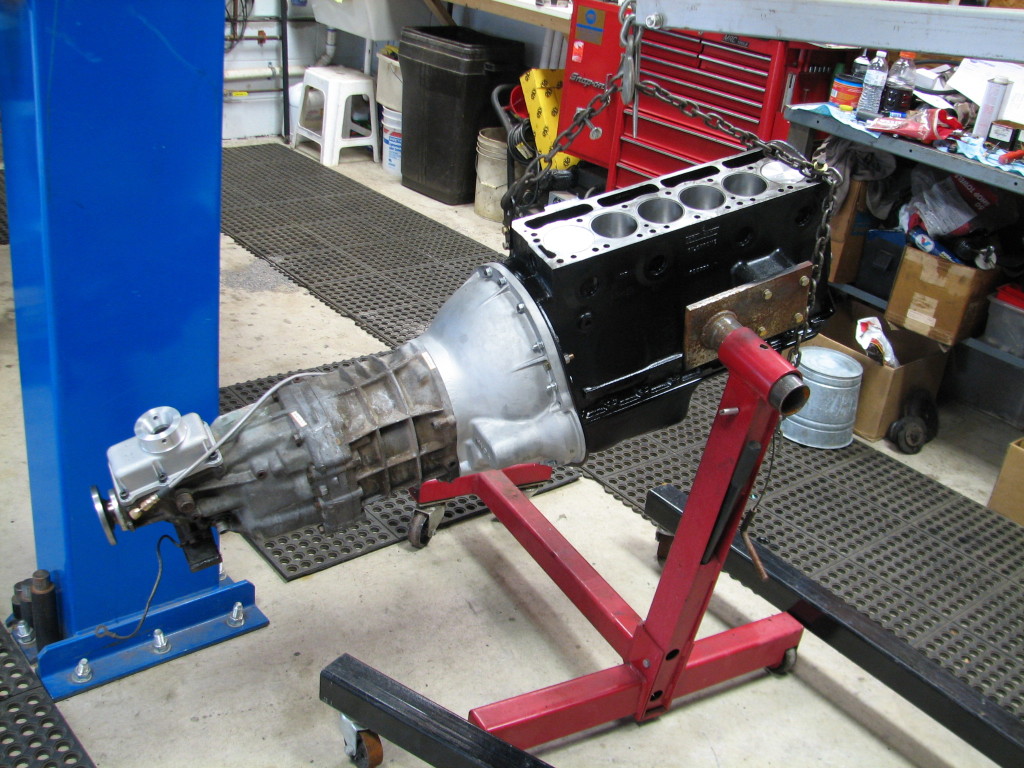So, Chip informed me the other day that a customer is replacing his TR6 transmission with a Toyota Five Speed. My immediate mental response was, “Oh yeah!” Five speeds is more than four and that’s good, right? When I got in the car and left, I wondered, “Why? What’s wrong with overdrive?”
So, being a skeptic, I asked, “What advantage does a Toyota Five Speed provide versus a stock transmission with overdrive?” I’ll use a list format for Chip’s points.
–Durability. Chip’s experience is that it’s not uncommon to begin having problems as early as 50,000 miles with the Triumph box. Some of the problems witnessed have been the layshaft bearings wearing and eating into the shaft and in some cases destroying the laygear. Other frequent wear items include the synchronizers, and replacements of satisfactory quality are becoming more difficult to find.
–They sometimes leak. Given the Brits’ historical inability to join two surfaces together and have them retain fluid, this is no surprise.
These first two reasons speak directly to my appreciation for trouble free motoring. He wasn’t done.
–The bearings in the stock box are undersized for the job they were intended to do.
–The OD unit adds weight to the car
–The OD unit sucks power from the car. It runs on pump pressure, which uses HP from the car.
In contrast, the Toyota box will go for 200,000 miles, and parts are available. They don’t leak, they weigh the same as a Triumph box, and have excellent ratios and shift well. The bearings and gears are oversized, which makes the box strong for our applications.
My personal opinion? Seems to me that if you’re motoring along and having no problems, keep on truckin’ and don’t think much of it. When you start having problems and need transmission work, consider the upgrade. That’s what I would do.
More information here… http://www.hvdaconversions.com/

